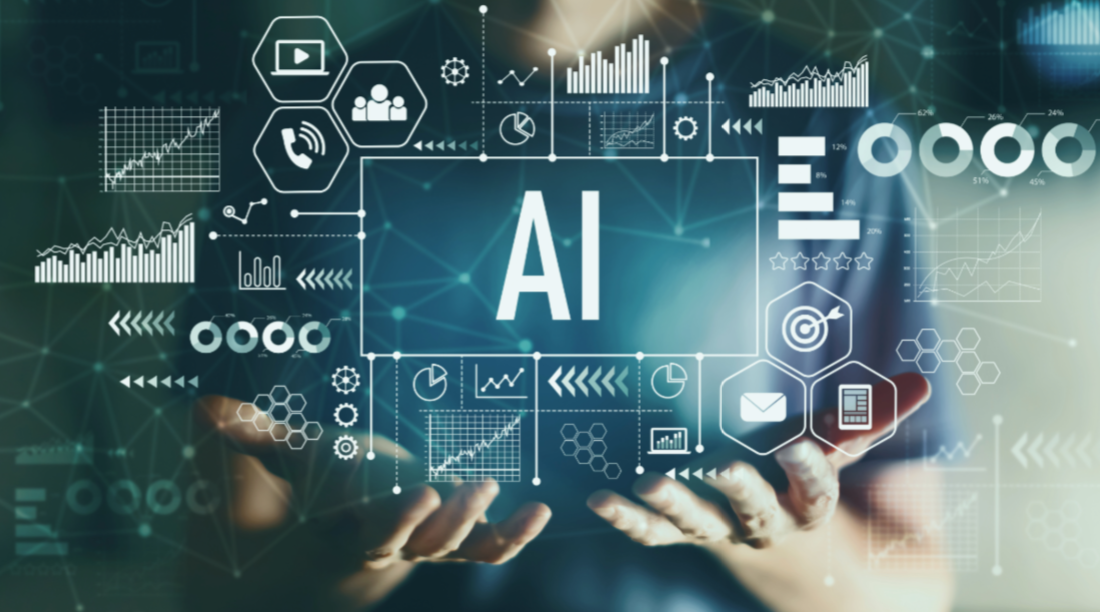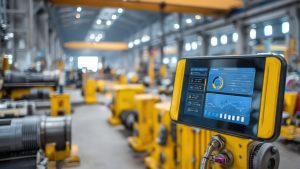Pinpointing the financial payoff of AI-infused asset maintenance strategies is now a must-have skill for forward-thinking operations leaders. Understanding the ROI of AI in asset maintenance is crucial as companies scramble to find ways to turbocharge productivity, trim expenses, and free themselves from the grips of costly downtime. One hand is working to upgrade the system, while the other is dealing with ancillary headaches—fragile infrastructure, a scarcity of capable hands, and the market’s constant shape-shifting.
With AI analyzing every little detail, we can anticipate equipment failures, stave off unplanned downtime, and get back to business as usual – all while fine-tuning our operations to perfection. But for those of us responsible for asset-intensive operations, a burning question arises: is AI just hype, or does it truly offer a worthwhile return on investment? Let’s cut to the chase – understanding the ROI of AI in asset maintenance is complex. You can’t stumble upon success by accident; to really make it happen, you need to have a deep understanding of the competitive forces at play. Before making a move, consider both the upside and the downside.
When AI takes the wheel, predictive maintenance becomes a powerful tool that can spot even the smallest issues before they become major problems.

Let’s crack open the black box of AI-driven asset maintenance before we start crunching ROI numbers. The main game-changer is ” predictive maintenance,” where AI algorithms sift through historical data. It uses real-time sensor readings and external factors (like weather) to anticipate potential equipment problems. Think about fixing a leaky pipe *before* it causes a flood. Predictive maintenance addresses small issues proactively, preventing larger, more costly breakdowns. It’s like having a crystal ball but powered by data.
Benefits of AI in Asset Maintenance
AI brings serious perks to asset maintenance that directly contribute to a solid ROI. First, AI reduces downtime. Imagine manufacturing lines producing goods without interruption – AI helps make this a reality. When productivity rockets upward, the payoff is clear: plush profits and a competitive edge. It can even predict failure so teams are always ahead of the curve.
Next is lower maintenance costs. Rigid timetables often result in wasted resources or latent problems flying under the radar. Minor problems can metastasize into major crises if you’re not careful. What’s broken gets fixed, and what’s working gets tweaked – that’s the beauty of AI-driven maintenance based on actual requirements. Research from IBM shows that AI-driven predictive maintenance can lead to a 2.5x reduction in maintenance costs. Think of it this way: with AI, you go from fixing problems after they happen to *preventing* them. The payoff is threefold: you’ll reclaim hours, streamline your budget, and avoid the sorts of headaches that come with it.
And that’s not all – it’ll even add years to the life of your assets. Machines wear out over time. However, well-maintained assets tend to live longer and perform better. Thanks to AI, you can hyper-charge your workflow and get a solid return on investment.
Measuring the ROI of AI in Asset Maintenance
Let’s talk numbers. Figuring out whether those AI algorithms will pay off – that’s the million-dollar question. Change someone’s life for the better – it’s a difference that matters. So, what gets added to your profit and loss statement at the end of the day? We have to face it; understanding the ROI of AI in asset maintenance is challenging. You can’t sugarcoat it – decisions demand full disclosure, no exceptions. Cost implementation is only half the battle; we need to look further. By considering the full picture – both concrete results and less tangible advantages – you’ll reap benefits that truly add up over time.
Here’s how:
- Reduced Downtime and Increased Productivity: By preventing unexpected breakdowns, AI helps ensure that machines and equipment operate at peak performance for longer periods. This can be measured by tracking uptime, production output, and order fulfillment rates.
- Lower Maintenance Costs: Say goodbye to panicked repairs and hello to a more proactive approach – that’s the power of AI algorithms in maintenance. Labor costs dwindle, spare parts are no longer a headache, and emergency repairs become a thing of the past – that’s the beauty of this approach. You can put these savings side by side with your past maintenance bills to see the difference. With AI on your side, you can strategically plan repairs during slow periods, freeing up resources and slashing expenses. The paperwork goes away, replaced by easily accessible digital info. Mobile phones and other tools make data accessible anywhere, anytime. Think of what CNH is doing with their autonomous tractor concept. “Now, instead of having to go to a PDF file, a three-ring binder, or pull out the big book, they can literally say, ‘Hey, I’m working on a T7 tractor, and I need to replace the oil filter,'” said Kermisch.
- Extended Asset Life: With better preventative care facilitated by AI, you’re ensuring machines run smoother and last longer. A prolonged lifespan has a practical upside: delayed equipment upgrades. This value can be measured by analyzing the lifespan of your assets before and after implementing an AI-powered maintenance program.
- Protecting You from Harm: Top Priority When it comes to safety, AI solutions are like having a sixth sense – they detect potential hazards before they become major issues, keeping workers safe and avoiding costly fines.
- Improved Decision-Making and Resource Optimization: AI-driven data insights empower managers to make more informed decisions on asset utilization, spare part management, and personnel allocation. This trailblazer Resource allocation is getting a serious refresh around here.
While a single 5.9% ROI may sound paltry, compounded over years of maximized efficiency and optimized costs, the real impact of understanding AI’s ROI in asset maintenance becomes clear. Check out the rate at which this field has been expanding! It’s projected to grow to $200 billion in 2024. Companies like IBM, Hugging Face, OpenAI, Pinecone, and even Nvidia are recognizing the growth in AI with lofty valuations.
Overcoming Challenges to Realize AI ROI in Asset Maintenance
It’s important to know the pitfalls of AI adoption. Get moving because inaction is not an option if you want to see results. Kick speculation to the curb and adopt a no-nonsense attitude that gets results. Implementing AI in asset maintenance isn’t just plug-and-play. The biggest stumbling block? Many organizations just aren’t quite there yet in terms of data readiness.
Good AI depends on good data—it’s a simple but crucial formula. This can be a challenge when data is scattered, inconsistent, or just plain unreliable. Making sense of your data starts with a thorough cleaning and merging. Building a sturdy base gives AI algorithms something concrete to latch onto.
Second on the list of obstacles is the initial investment. Jumping into AI often requires a substantial upfront investment. Although companies are starting to see up to 3.5x the ROI, there’s software, hardware, and, most importantly, the specialized expertise to set things up right. You can’t just add AI to an existing system and hope for the best. When done properly, the benefits can make these expenses worthwhile.
One final word of caution. Jumping into AI without a well-defined strategy can lead to disillusionment. Pinpoint the specific pain points that are begging for a solution. For the adventurous types, switching gears can lead to a landslide of advantages and gains. There’s a temptation to see AI as a silver bullet. Why some businesses consistently hit their targets because they operate with a clearly defined plan that supports their overall vision. You need the right people in place and the discipline to continuously evaluate and fine-tune things along the way.
Maximizing Your ROI: Key Steps to Successful AI Implementation

Embracing AI requires a strategic approach and a roadmap. By introducing AI elements gradually, businesses can fine-tune their operations and amplify their bottom line. Time to get down to business: let’s pinpoint the moves that drive results and avoid the pitfalls that drain your resources.
Define Your Business Objectives: Crystallizing Goals for Asset Maintenance
Before starting this AI adventure, it’s imperative to define clear-cut objectives. Take aim at the root cause and troubleshoot from there. The desired outcome of using AI in asset maintenance is clear in your mind. This starts by determining what hurts the most in your current processes. This will indicate which specific areas will deliver the biggest bang for your AI buck. If unplanned downtime is your nemesis, your focus should be minimizing that downtime through predictive maintenance.
Two things need to happen simultaneously: your goals need to marry up with the Company’s objectives, and when they do, the synergy is incredible. Ultimately, make sure those algorithms work in sync with what *you* are trying to achieve. It may help to start small. Running pilot programs or proof of concept implementations to test the waters can offer a quicker assessment of value. PwC recommends guarding against three main errors before implementing:
- Investing in the technology without having clear business objectives means AI becomes an expense, not a tool for success. Real-time data is more than just a nice-to-have – it’s a must-have. The moment companies turn a blind eye to it, they risk falling short of their full potential.
- Deploying AI broadly without piloting it to measure potential return first and to make sure you get what you hope for.
- Forgetting that successful AI requires cultural transformation throughout the organization. To really drive progress, everyone on the team needs to commit to using data to inform their decisions, with no excuses.
Assessing Your Data Infrastructure
AI relies on quality data, so scrutinizing your current data infrastructure is essential. It has to have both volume *and* accuracy for algorithms to learn and produce reliable results. Artificial intelligence is built upon a central idea that propels every action, every decision, and every innovation. It often requires more investment to get it right, but the cost of neglecting this step is ultimately higher.
Don’t be surprised if you need additional sensors, databases, or system integrations to achieve that essential quality and accessibility. This Pulling it off demands a sharp focus on preparation, zeroing in on what needs to happen. Setting AI up for success depends on laying a solid groundwork first. It has to flow effortlessly to AI systems.
Building a Skilled AI Team: Embracing Expertise
You need individuals who speak the language of algorithms. If your existing team lacks data scientists, engineers, and AI specialists, finding those individuals is your next big task. Building a dream team might require branching out – signing up for industry conferences, joining forces with like-minded organizations, or scooping up top talent from the job market. Don’t underestimate this factor.
To set your AI system up for long-term triumph, it’s crucial to have a team on board with the diverse skills needed to implement and maintain these systems – a mismatch can spell disaster. A McKinsey and Company study states this:
“The single biggest constraint for realizing the value of AI continues to be a lack of appropriate organizational skills—by our estimation, nearly two-thirds of large companies fail to deploy AI pilots successfully. One leading reason for this challenge is that companies often treat their technical personnel (data scientists and machine-learning engineers, for instance) as the only necessary players for AI integration, which results in gaps between an organization’s strategic aspirations for AI and the results on the ground. Companies that demonstrate strong leadership by creating roles and career paths for those personnel—as well as for AI translators and data and AI architects—show strong results with the successful deployment of AI.”
McKinsey also asserts:
“There is also more clarity than ever before that scaling AI is largely not a technical but an organizational and cultural journey.”
So, while 2023 may be remembered as the year generative AI broke out, a McKinsey report shows more than half of organizations experimented with it. Meanwhile, a considerable hurdle presents itself. Turning AI scripts into reader-friendly content is my superpower. I swap out overly formal tone for conversational voice, chunky sentences for streamlined ones, and bland adjectives for vivid descriptions that leap off the page. The tech we’re working with isn’t just trendy – it’s rooted in addressing specific problems. Smart integration means knowing what this tool can really do and where it fits in with what you already have in place. To make a new technology stick, your team needs to be ready to pivot on a dime.
Start Small, Scale Gradually
Avoid those headlines that talk about failed AI projects. Nail down focused achievements in areas where the potential for rapid growth is high. It streamlines your workflow without skipping a beat, which is proof of its value. It’s the small stuff that adds up – every minor victory delivers a fresh wave of data, insight, and gut feeling that gives you the edge you need to push forward. . Sparking a fire that burns brighter with each passing moment. As the organization spreads its wings, a silky adaptation across departments becomes a natural next step.
Once those initial efforts have shown positive results, scaling your AI solution with minimal disruption and risk will ensure you stay agile. Gartner predicts that by the year 2028, 50% of enterprises building their AI from scratch will drop out of costs and tech debt.
FAQs About Understanding the ROI of AI in Asset Maintenance
What is the ROI of AI?
The return on investment of artificial intelligence in business, like asset management, can vary but can average around 5.9% for enterprise-wide solutions, with certain sectors seeing up to 13%.
AI has shaken up asset management – let’s take a closer look.
One of the most valuable tools in an asset manager’s toolbox is AI. By digging through vast amounts of data, it can paint a vivid picture of an asset’s future, including its expected lifespan and the best time to intervene. It can even offer guidance on how to fix common issues that arise. A real-world example can be found at CNH, which allows farmers and mechanics using T7 Tractors to request by voice which filter needs to be replaced.
Maintenance management gets a major boost from artificial intelligence – so what does that look like in practice?
In maintenance, AI predicts what will fail so repairs can be completed before a more serious and costly event occurs while improving operational efficiency. McKinsey & Company’s research supports this. They suggest corporate profits may increase by $4.4 trillion yearly due to the increased use of AI.
How to Measure ROI of Generative AI?
Gartner advises a structured approach by creating a strong business case for return on investment that includes factors for both costs and value generated across all areas the Company uses it. A study by A Fresh from the labs of IBM uncovered some pretty remarkable facts about… The breakdown is clear: a hefty chunk of AI businesses struggle to stay in the black. One big factor in calculating value, as seen by the 2023 AI in Customer Experience report, is improved customer service since AI can make suggestions for products based on data.
The curtain falls on this discussion, but the impact will linger – so what’s the takeaway?

Boiling it down to a simple cost-benefit analysis sells short the rich potential of AI in asset maintenance. Taking on a game-changing technology demands a measured approach and a willingness to adapt – no shortcuts allowed. Understanding the ROI of AI in asset maintenance involves considering not just the tangible but also the less quantifiable aspects. These aspects are things like worker satisfaction, greater transparency through easier information accessibility, faster knowledge transfer for onboarding, upskilling new team members, improved resource allocation, and the opportunity cost of not adopting AI, which may ultimately be hefty.
Asset maintenance is getting a major overhaul thanks to the power of artificial intelligence. AI might start as a high-tech whisper, but once you put it to work, it becomes a roaring engine driving killer profits, watertight safety, and sales traction that leaves rivals in the dust. It’s time to face facts: wringing the most value out of AI in asset maintenance demands acknowledging both its impressive assets and its imperfections. To really make progress, you’ll need four essential ingredients: a sharp strategy, high-quality data, a skilled team, and the patience to tackle each phase individually. The numbers, and even history itself, don’t lie.
Imagine being able to pinpoint the most profitable investment opportunities and sidestep potential landmines – that’s the promise of integrating machine learning and neural networks into your portfolio management and risk management process. Picture a factory floor where production hums along uninterrupted. That’s what happens when AI predicts and prevents equipment failures, saving life sciences companies time and resources. Embracing AI in asset maintenance not only secures a competitive edge but also ensures that all rights reserved are protected as companies navigate this complex yet rewarding landscape.
Getting the most out of AI in asset maintenance requires harnessing the power of data science to make sense of the avalanche of information we’re faced with. To get reliable results from AI models, you need top-notch data – anything less can lead to unclear or misleading insights. Unreliable data spawns flimsy predictions, in turn, torpedoing maintenance strategies, making them hindrances to – rather than catalysts for – optimized asset performance. Asset managers who fail to gather accurate, reliable data are basically running their AI tools on rumor and speculation – and that’s a recipe for disaster. Raising the bar on data quality yields a double benefit: it sharpens AI model performance and propels maintenance operations into the modern era.
In asset maintenance, there’s a better way – trading in surprise repairs for smart, data-fueled forecasts that keep equipment humming and the bottom line healthy. Crucial partners in AI evolution, asset managers facilitate fusion between strategic objectives and algorithmic progress, precision-engineering solutions from robust datasets, and optimizing tactics based on cumulative success. With AI transforming asset maintenance, a powerful partnership emerges between data scientists and asset managers, fueling groundbreaking ideas and empowering companies to stay ahead of the curve. AI investments drive this transformation, focusing on smart asset allocation and achieving significant cost savings.
When you inject AI and big data into maintenance, an often-vitreous process gains flexibility and dynamism, refocusing on smarter fixes, preventive measures, and long-term gain. Imagine being able to transform asset maintenance into a seamless, cost-effective process. It’s possible when companies calculate the precise financial benefits of AI and concurrently prioritize top-notch data quality, ultimately turning trouble spots into major wins.



